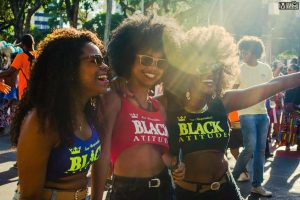
Even though Brazil has a predominantly black and colored population, Black features and culture are often looked down upon and stigmatized. In this article by Zoe Sullivan and Ana Terra Athayde, the current trend of black women and women of color accepting and embracing their natural hair is explored. The article begins with a reference to the Brazilian Blowout technique which has gained international fame because of many famous American stars. This technique was widely used by women of color to conform to social norms and standards of beauty; but today, many young black and mixed raced women are choosing to wear their hair in its natural form to “reclaim their identity.” This has created a market for natural hair salons and hair product lines in Brazilian.

Like many other movements involving hair throughout history, this is about more than just defying fashion norms, but it also brings to light many of the problems and oppressions people of color face in Brazil. Black women earn 28% of what non-black males earn and 80% of employed black females work as maids or in manual labor. This is coupled by a lack of representation of black women in Brazilian media. By embracing their natural hair these black women are challenging the notion of black culture and black people as inferior.
https://bglh-marketplace.com/2015/11/40-incredible-photos-from-brazils-first-natural-hair-empowerment-march/
https://www.theguardian.com/world/2016/aug/04/brazilian-women-natural-hair-techniques
